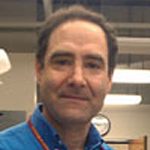Editorial Board Members’ Collection Series: Stem Cells and Regenerative Medicine
A special issue of International Journal of Molecular Sciences (ISSN 1422-0067). This special issue belongs to the section "Molecular Biology".
Deadline for manuscript submissions: 20 June 2025 | Viewed by 4965
Special Issue Editors
Interests: regenerative therapy; stem cells; cell biology; mesenchymal stromal cells
Interests: stem cells; male infertility; human genetics; reproductive immunology
Special Issues, Collections and Topics in MDPI journals
Interests: cell biology; stem cells; 3D culture models; cell migration; cell adhesion; skin biology; cancer research; anti-cancer agents; translational medicine
Special Issue Information
Dear Colleagues,
Over the last decade, advances in stem cell biology have provided hope for the treatment of human diseases that cannot be cured with conventional medicines. Regenerative medicine is a broad field that includes the processes of replenishing human cells in tissues or organs to restore their normal functions. Therefore, tissue regeneration depends on a population of self-renewing stem cells and their integration into the appropriate tissue niche.
This Special Issue is open to all researchers studying stem cells and their potential therapeutic use at any level, such as the identification of key molecular signaling or clinical applications. We welcome novel works on stem cell biology, stem microenvironment, stem cell signals, tissue engineering technology allowing for ex vivo cell maintenance, and their clinical application. Furthermore, manuscripts introducing the latest progress, new challenges, and knowledge in the field of tissue regeneration are welcome.
Prof. Dr. Mark L. Weiss
Prof. Dr. Maciej Kurpisz
Prof. Dr. Alessandra Marconi
Guest Editors
Manuscript Submission Information
Manuscripts should be submitted online at www.mdpi.com by registering and logging in to this website. Once you are registered, click here to go to the submission form. Manuscripts can be submitted until the deadline. All submissions that pass pre-check are peer-reviewed. Accepted papers will be published continuously in the journal (as soon as accepted) and will be listed together on the special issue website. Research articles, review articles as well as short communications are invited. For planned papers, a title and short abstract (about 100 words) can be sent to the Editorial Office for announcement on this website.
Submitted manuscripts should not have been published previously, nor be under consideration for publication elsewhere (except conference proceedings papers). All manuscripts are thoroughly refereed through a single-blind peer-review process. A guide for authors and other relevant information for submission of manuscripts is available on the Instructions for Authors page. International Journal of Molecular Sciences is an international peer-reviewed open access semimonthly journal published by MDPI.
Please visit the Instructions for Authors page before submitting a manuscript. There is an Article Processing Charge (APC) for publication in this open access journal. For details about the APC please see here. Submitted papers should be well formatted and use good English. Authors may use MDPI's English editing service prior to publication or during author revisions.
Keywords
- stem cells
- regenerative medicine
- niche
- tissue engineering
- cell signaling
- differentiation
- stem cells therapies
- cell culture technologies
Benefits of Publishing in a Special Issue
- Ease of navigation: Grouping papers by topic helps scholars navigate broad scope journals more efficiently.
- Greater discoverability: Special Issues support the reach and impact of scientific research. Articles in Special Issues are more discoverable and cited more frequently.
- Expansion of research network: Special Issues facilitate connections among authors, fostering scientific collaborations.
- External promotion: Articles in Special Issues are often promoted through the journal's social media, increasing their visibility.
- e-Book format: Special Issues with more than 10 articles can be published as dedicated e-books, ensuring wide and rapid dissemination.
Further information on MDPI's Special Issue polices can be found here.








